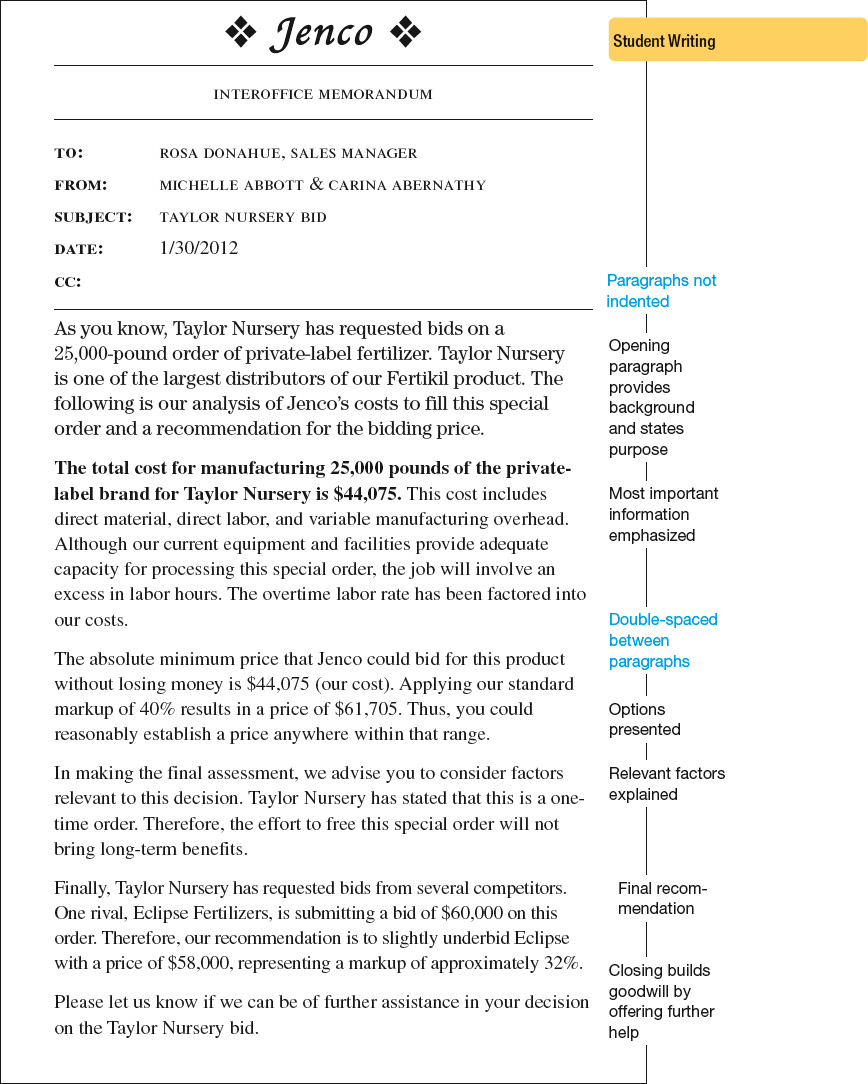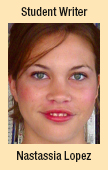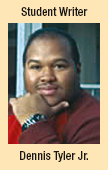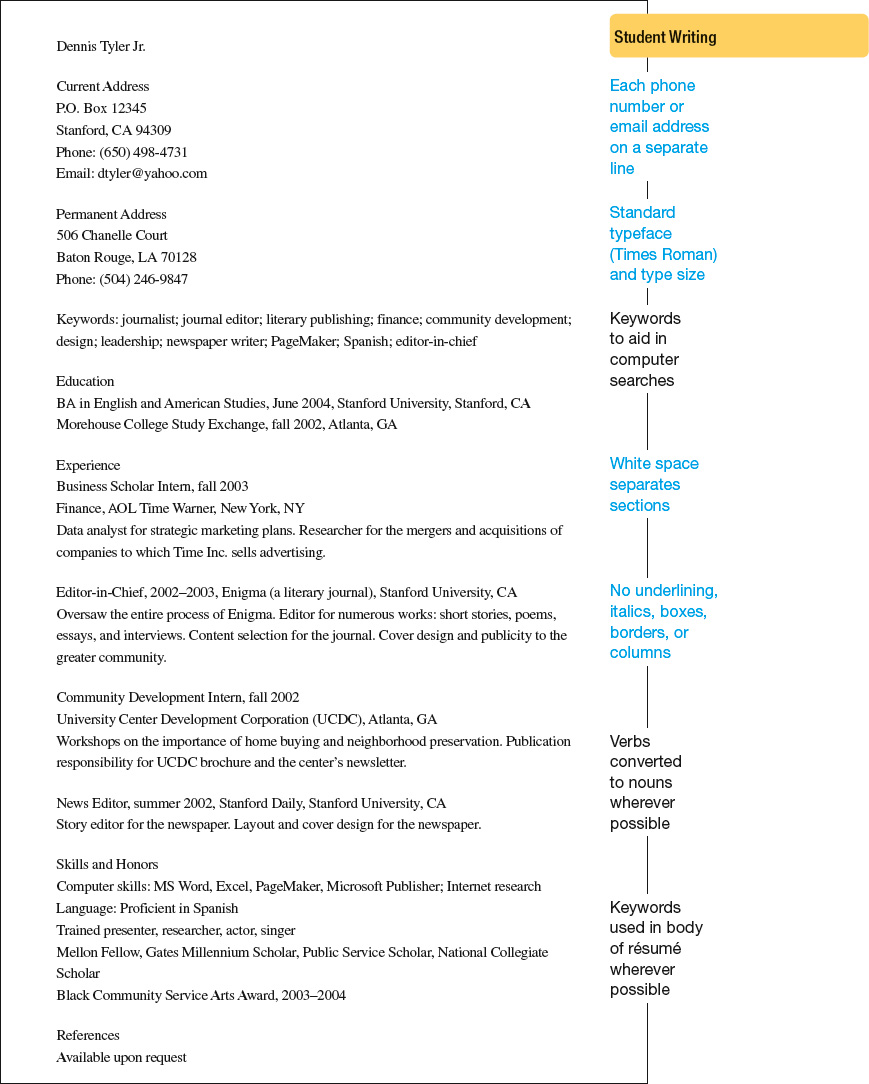65b Writing texts for business
Writing assignments in business classes serve two related functions. While their immediate goal is to help you master the theory and practice of business, these assignments also prepare you for the kinds of writing you will face in the world of work. For this reason, students in every discipline need to know how to write effective business memos, emails, letters, résumés, and reports.
Memo
Memos are a common form of print or electronic correspondence sent within and between organizations. Memos tend to be brief, internal documents, often dealing with only one subject.
Guidelines for Writing Effective Memos
AT A GLANCE
- Write the name of the recipient, your name, the subject, and the date on separate lines at the top.
- Begin with the most important information: depending on the memo’s purpose, you may have to provide background information, define the task or problem, or clarify the memo’s goal.
- Use your opening paragraph to focus on how the information you convey affects your readers.
- Focus each subsequent paragraph on one idea pertaining to the subject.
- Present information concisely and from the readers’ perspective.
- Emphasize exactly what you want readers to do and when.
- Use attachments for detailed supporting information.
- For print memos, initial your memo next to your name.
- Adjust your style and tone to fit your audience.
- Attempt to build goodwill in your conclusion.

Following is a memo, written by two student writers, Michelle Abbott and Carina Abernathy, that presents an analysis and recommendation to help an employer make a decision.
MEMO

Business email can be formatted much like a print memo but is easier to create and store and faster to distribute. Remember, however, that email is essentially public and that employers have easy access to email written by employees. As always, it’s best to use discretion and caution in email, especially on the job.
Letter
Despite the popularity of email, letter-writing remains an important skill. When you send a business or professional letter, you are writing either as an individual or as a representative of an organization. In either case, and regardless of your purpose, a business letter should follow certain conventions.
The letter of application or cover letter often accompanies a résumé. The purpose of a letter of application is to demonstrate how the experiences and skills you outline in your résumé have prepared you for a particular job; it is important to focus on how you can benefit the company, not how the company can help you. If you are responding to a particular advertisement, mention it in the opening paragraph. Finally, be sure to indicate how you can be reached for an interview.

The following application letter for a summer internship was written by Nastassia Lopez, a student at Stanford University. Note that the letter has been reproduced in a narrow format to allow for annotation.
LETTER OF APPLICATION

Guidelines for Writing Effective Letters
AT A GLANCE
- Use a conventional format.
- Whenever possible, write to a specific person (Dear Tom Robinson or Dear Ms. Otuteye) rather than to a general Dear Sir or Madam.
- Open cordially and be polite—even if you have a complaint.
- State the reason for your letter clearly. Include whatever details will help your reader see your point and respond.
- If appropriate, make clear what you hope your reader will do.
- Express appreciation for your reader’s attention.
- Make it easy for your reader to respond by including contact information and, if appropriate, a self-addressed, stamped envelope.
Résumé
While a letter of application usually emphasizes specific parts of the résumé, telling how your background is suited to a particular job, a résumé summarizes your experience and qualifications and provides support for your letter. An effective résumé is brief, usually one or two pages.
Research shows that employers generally spend less than a minute reading a résumé. Remember that they are interested not in what they can do for you but what you can do for them. They expect a résumé to be formatted neatly, and your aim is to use clear headings and adequate spacing that will make it easy to read. Although you may be tempted to use colored paper or unusual type styles, avoid such temptations. A well-written résumé with a standard format and typeface is the best way to distinguish yourself.
Your résumé may be arranged chronologically (from most to least recent) or functionally (based on skills or expertise). Include the following information:
- Name, address, phone numbers, and email address.
- Career objective(s). List immediate or short-term goals and specific jobs for which you realistically qualify.
- Educational background. Include degrees, diplomas, majors, and special programs or courses that pertain to your field of interest. List honors and scholarships and your grade-point average if it is high.
- Work experience. Identify each job—whether a paying job, an internship, or military experience—with dates and names of organizations. Describe your duties by carefully selecting strong action verbs.
- Skills, personal interests, activities, awards, and honors.
- References. List two or three people who know your work well, first asking their permission. Give their titles, addresses, and phone or fax numbers. Or simply say that your references are available on request.
- Keywords (for a scannable résumé). In general, nouns function as keywords for résumés that are scanned by search engines. Look for places where you can convert verbs (performed laboratory tests) to nouns (laboratory technologist). Place the most important keywords toward the beginning of the résumé.
Increasingly, job seekers are composing online résumés as hypertext screen documents, which make keywords more visible to search engines and thus tend to produce more hits. In addition, some businesses ask applicants to fill out résumé forms on company Web sites. In such cases, take special care to make sure that you have caught any error or typo before submitting the form.

The following pages show student Dennis Tyler’s résumé in two formats, one in conventional print style, the other formatted for scanning.
RÉSUMÉ

SCANABLE RÉSUMÉ

Watch and respond to the video Writing for the real world.